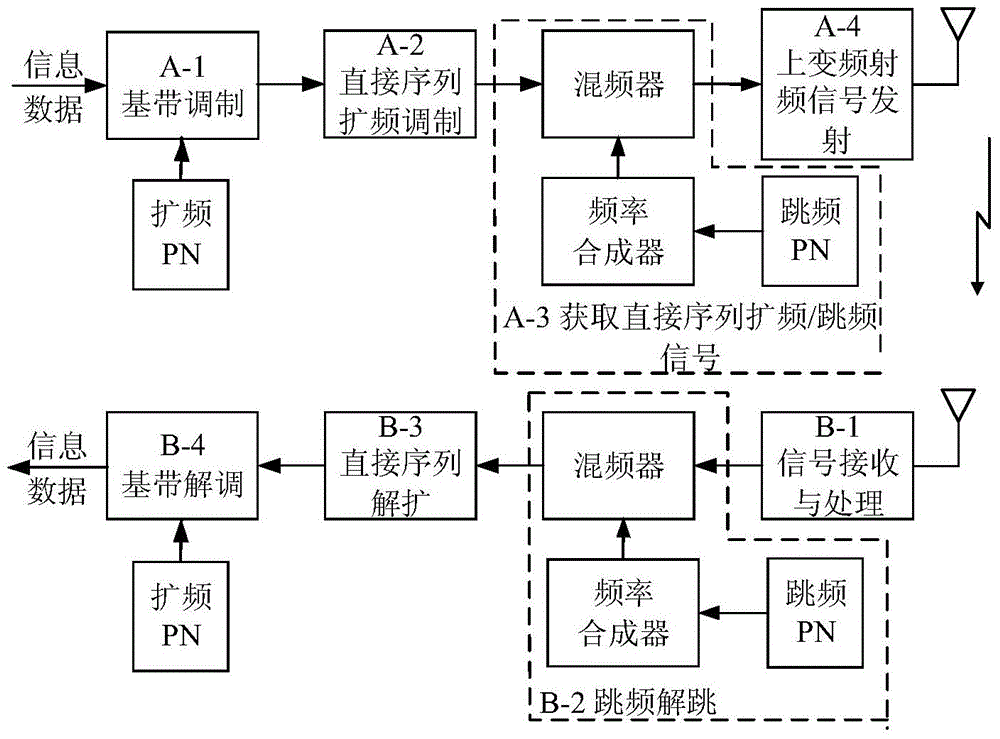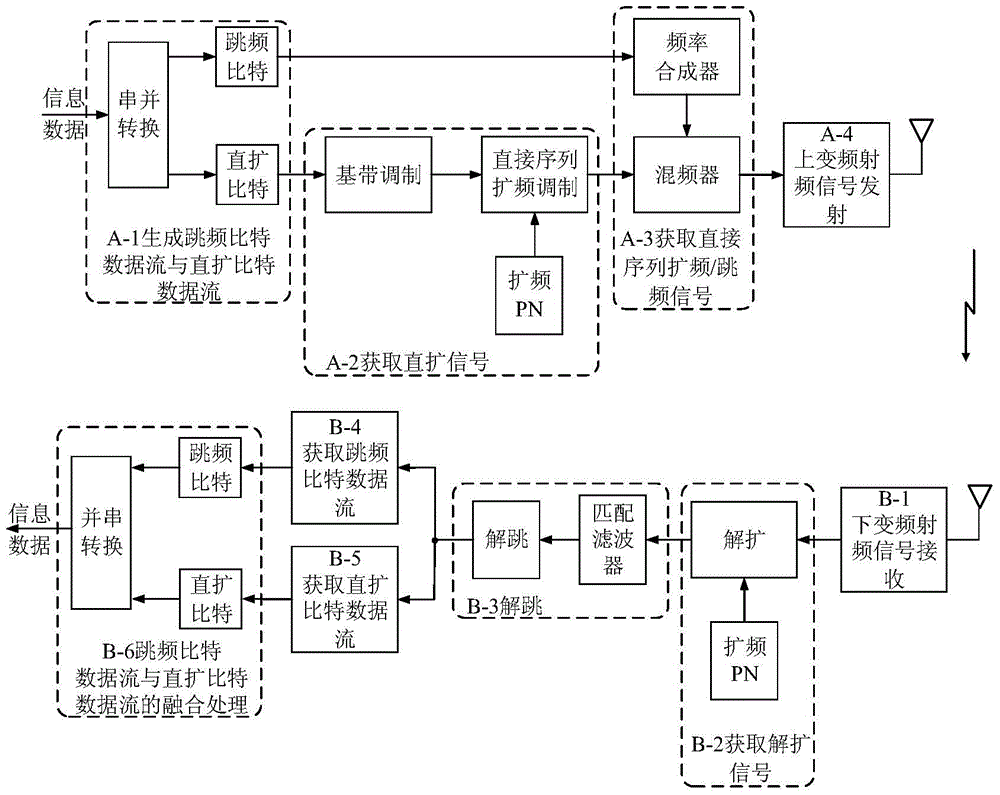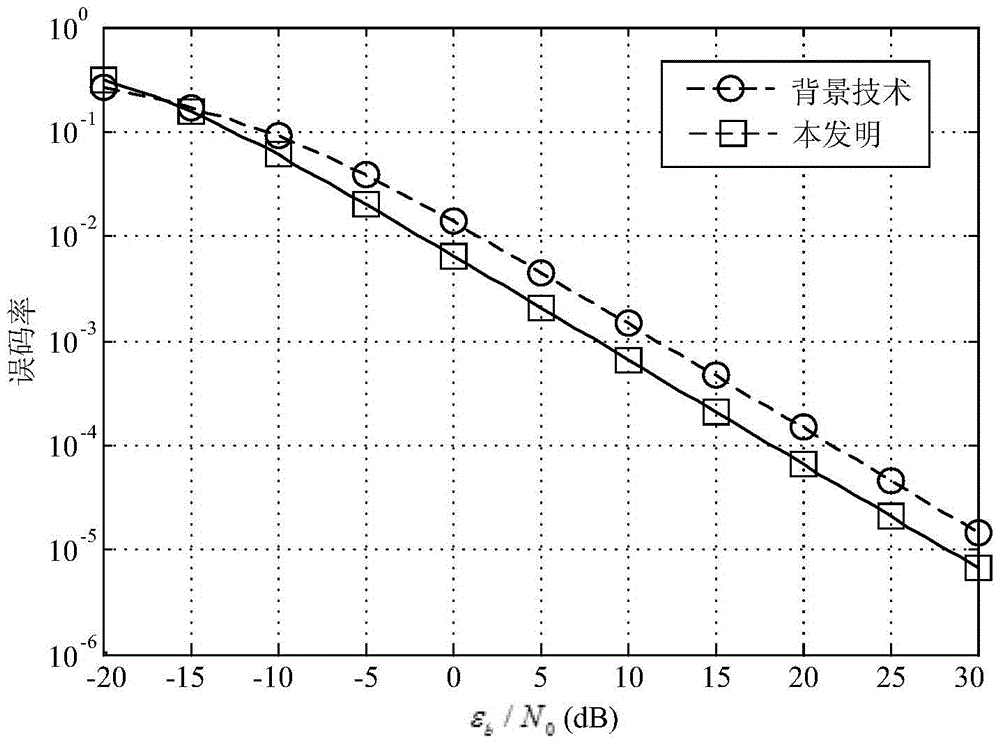Communication Method Using Information-Driven Direct Sequence Spread Spectrum/Frequency Hopping
A direct sequence spread spectrum, information-driven technology, applied in electrical components, transmission systems, etc., can solve problems affecting system performance, low spectral efficiency, system complexity, etc., to achieve high spectral efficiency, low complexity, and signal-to-noise ratio. The effect of gain increase
- Summary
- Abstract
- Description
- Claims
- Application Information
AI Technical Summary
Problems solved by technology
Method used
Image
Examples
Embodiment approach
[0043] In this embodiment: the symbol length L: 10;
[0044] Proportional coefficient β: 0.6;
[0045] Baseband modulation method: 16PSK;
[0046] Spreading factor of direct sequence spread spectrum: 64;
[0047] Number of carrier frequencies: 64;
[0048] Hopping rate: 1000hop / s;
[0049] Wireless channel environment: Rayleigh fading channel;
[0050] Channel SNR range: [-20:30]dB;
[0051] Data separation method: the binary information of 10 bits per symbol is divided into 6-bit frequency hopping bits and 4-bit direct spread bits through serial-to-parallel conversion;
[0052] Blind detection method: square law detection;
[0053] Transmitter A
[0054] Step A-1. Generate a frequency-hopping bit data stream and a direct-spread bit data stream: the information data at the transmitter is separated by data every 10 bits, and divided into frequency-hopping bits (6 bits in length) and direct-spreading bits (4 bits in length), In this way, the information data [1 0 1 1 0 1...
PUM
 Login to View More
Login to View More Abstract
Description
Claims
Application Information
 Login to View More
Login to View More - R&D
- Intellectual Property
- Life Sciences
- Materials
- Tech Scout
- Unparalleled Data Quality
- Higher Quality Content
- 60% Fewer Hallucinations
Browse by: Latest US Patents, China's latest patents, Technical Efficacy Thesaurus, Application Domain, Technology Topic, Popular Technical Reports.
© 2025 PatSnap. All rights reserved.Legal|Privacy policy|Modern Slavery Act Transparency Statement|Sitemap|About US| Contact US: help@patsnap.com



